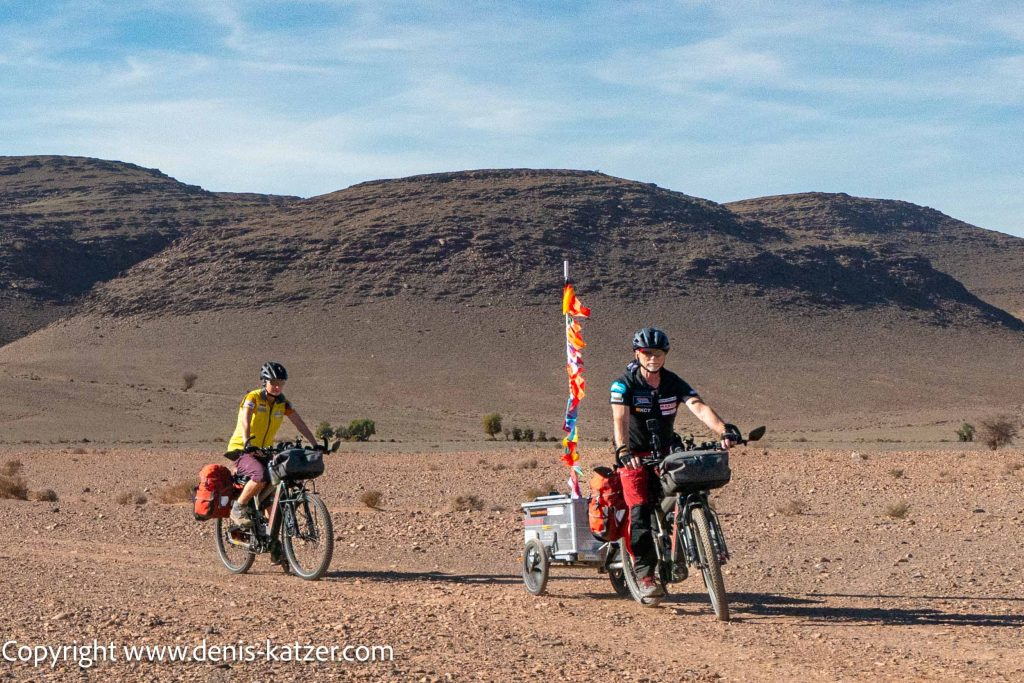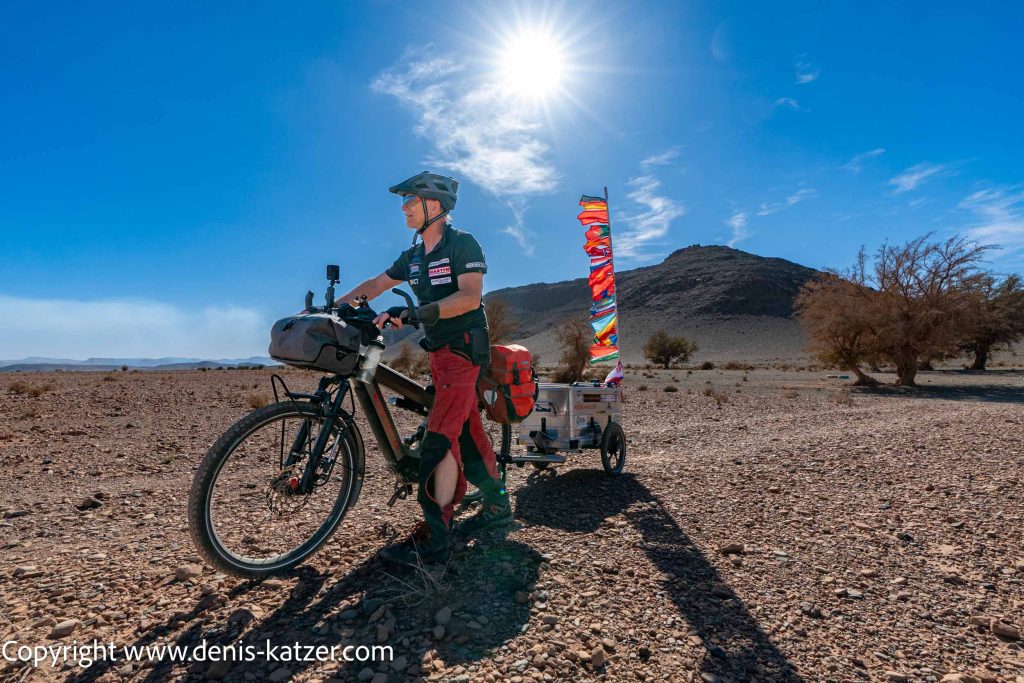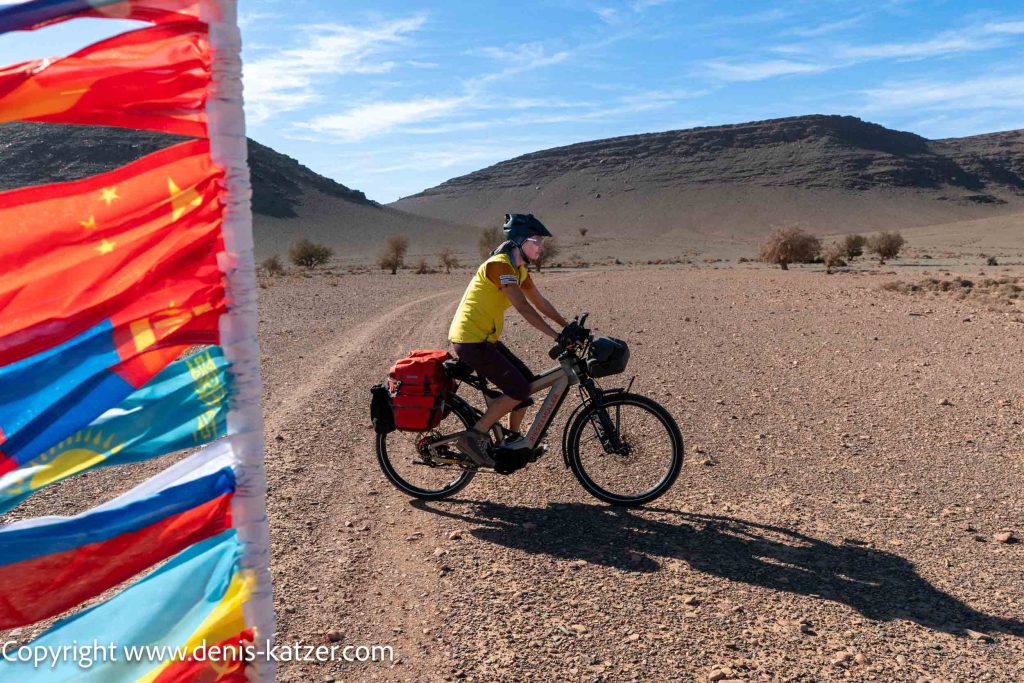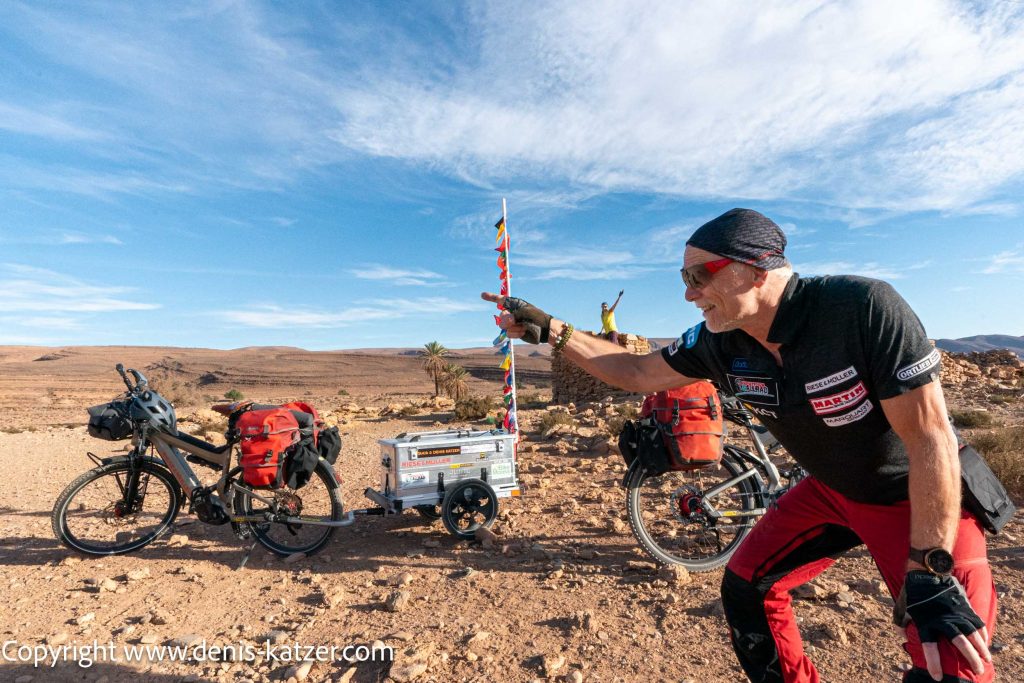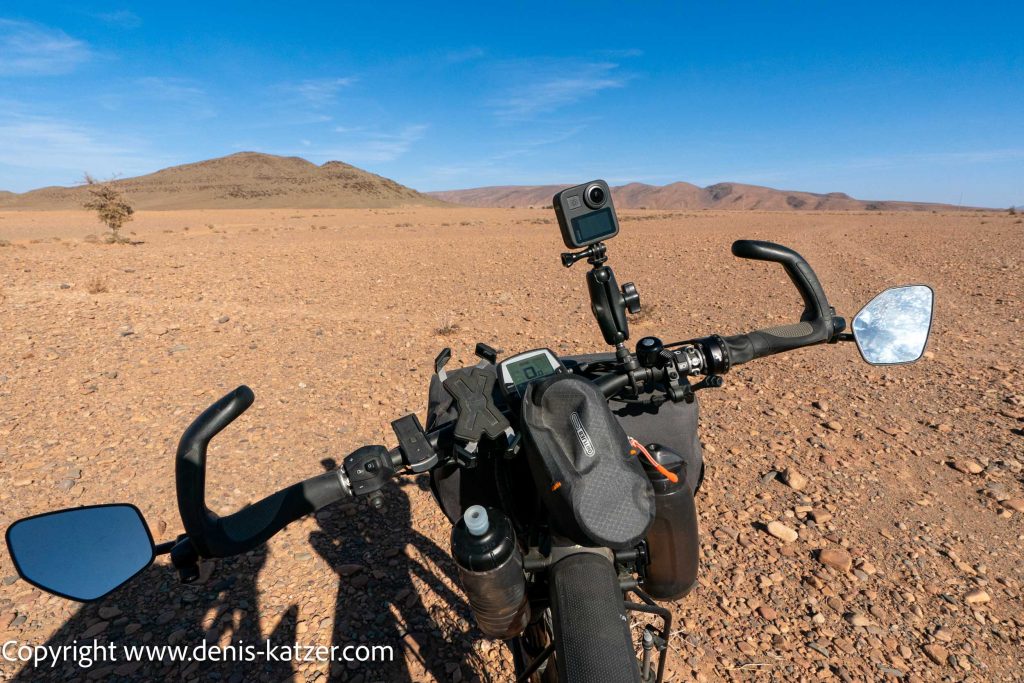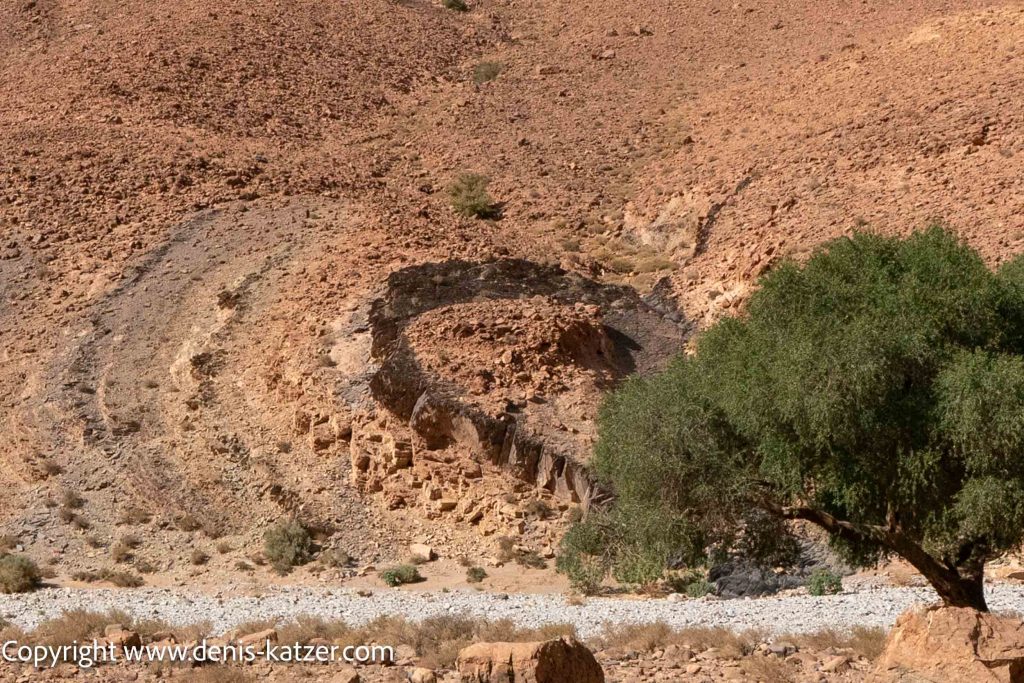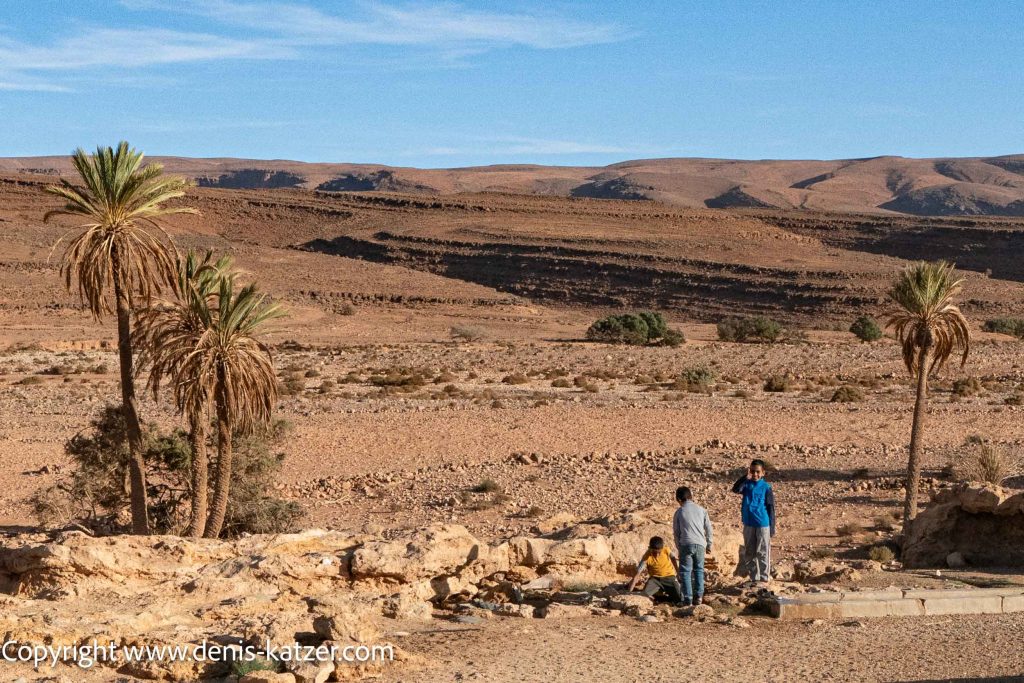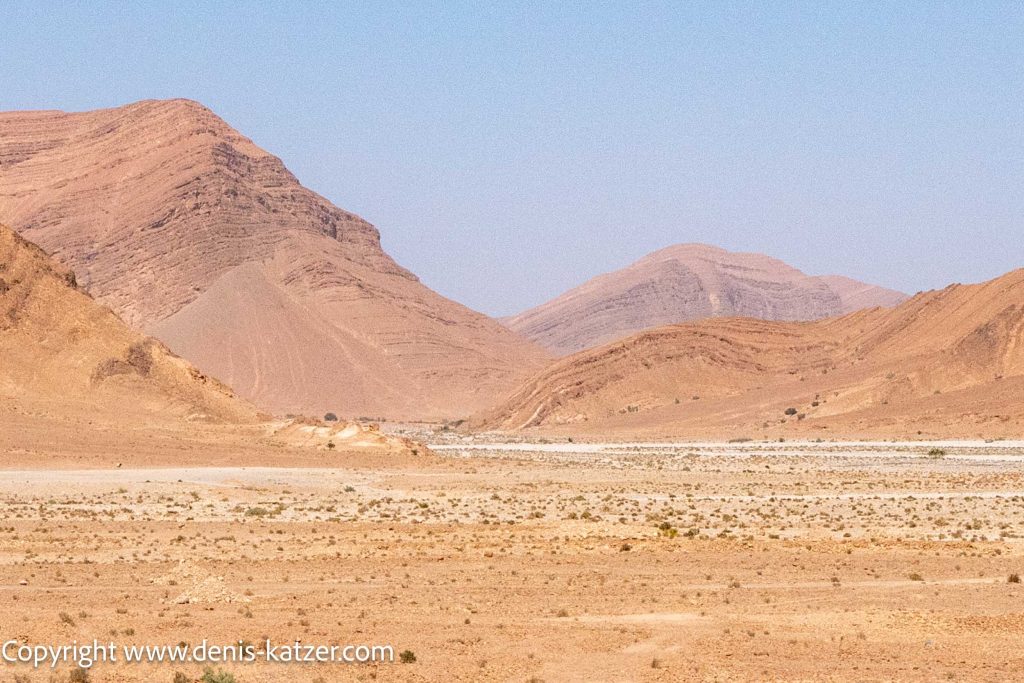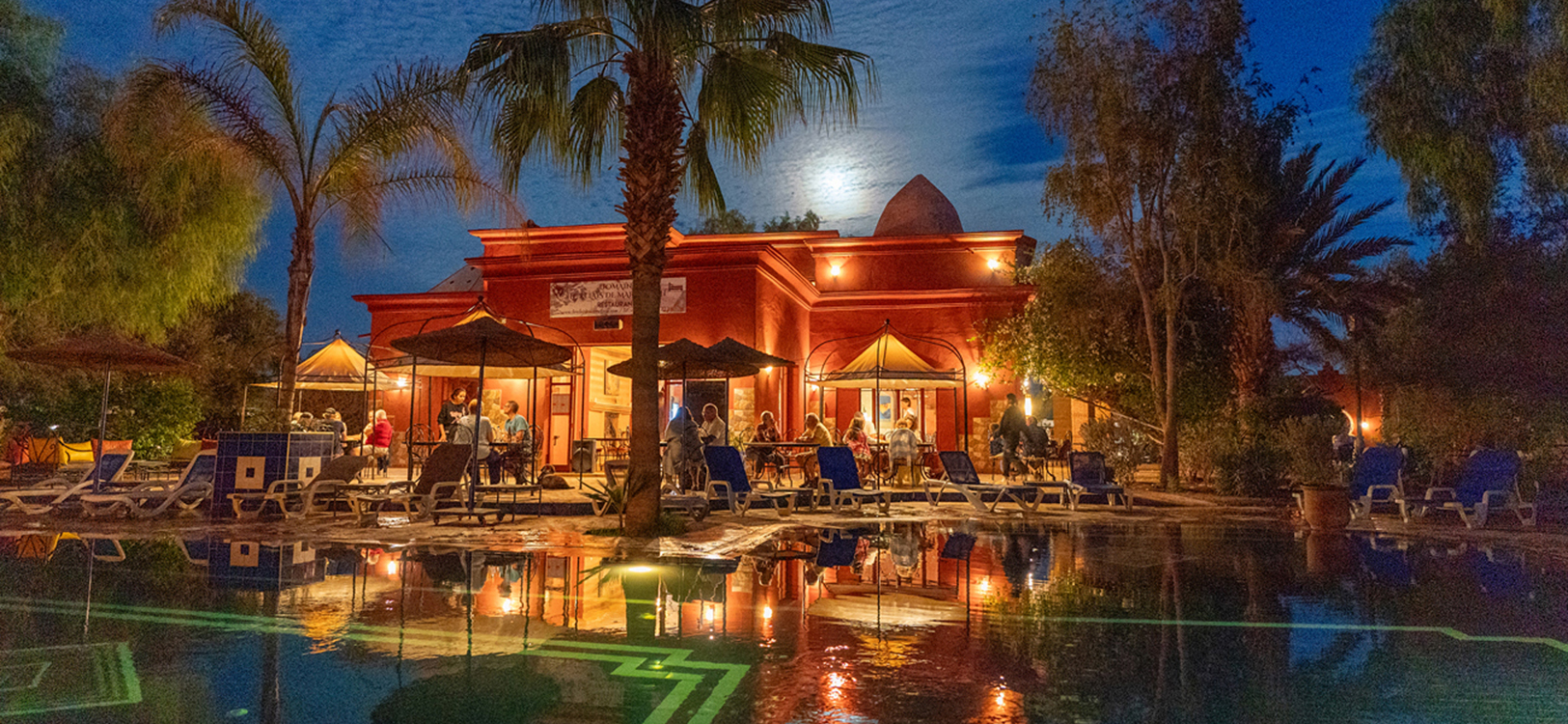
With e-bikes through the Sahara: A journey to the silence and essence of being
N 29°14'35.5" W 009°11'31.3"
Day: 02/21/2024
Day: 446
Camp 81
Country: Morocco
Location: Amtoudj village
Latitude N: 29°14’35.5″
Longitude W: 009°11’31.3″
Total kilometers: 12,020 km
Altitude: 726 meters
Temperature day max: 22°
Night temperature: 10 °
Today we set off to explore the surrounding desert region on our e-bikes. Our bikes are packed and we leave the campsite, which is located directly below the imposing Agadir Id Aissa storage castle in the small oasis village of Amtoudi.
It may come as a surprise why we are riding our e-bikes through the Anti-Atlas Mountains in the Sahara in these temperatures instead of our expedition vehicle. But for us, biking means a freedom that traveling in a vehicle cannot offer. It makes us happy to be physically active, to feel the wind in our hair and to strengthen our cardiovascular system at the same time. The exercise is good for us, especially after the stressful last few months when we’ve had to go through a lot. My mother was in hospital, our beloved dog Ajaci died and Tanja’s father also passed away, which made her fly to Germany twice.
There were also some technical challenges with our expedition vehicle, our Terra Love, which often stressed me out. Nevertheless, we are very happy with the vehicle, because repairs are simply part and parcel of a trip like this. Biking helps us to relieve this stress. The fresh air, the exercise and the contact with nature help us to clear our heads and improve our well-being.
A warning should be issued at this point: Riding e-bikes in the desert is a serious challenge despite the motor assistance – or perhaps because of it. Good and error-free energy management is crucial. Important questions such as “How many batteries do I need for the planned route?”, “Are there any hills to overcome?”, “How strong is the headwind?” and “What is the surface like?” must be considered.
However, we are well prepared for today’s tour, which will take us around 80 kilometers through the desert. Each of us has three 500-watt batteries with us – enough energy to cover twice the distance in an emergency. We also have all the tools in our trailer to repair almost any damage along the way. However, water is particularly important. Today, we have about 20 liters with us, because without water there is a risk of dangerous circulatory collapse in the heat.
Why so much caution? Tanja and I have already covered the distance from Germany to Siberia on normal bikes and have ridden e-bikes from Siberia through Mongolia, China, Vietnam and Cambodia to Thailand. On this tour of around 70,000 kilometers, which took almost ten years, we wrote five books in which we recorded our experiences and equipment tips. Here is the link to the books:
https://denis-katzer.de/category/shop/buecher
The desert demands respect, and our experiences remind us to always be careful. On our long journeys, we have learned that it is better to take a little more with us than too little – this has often saved us from worse. We have now left the narrow strip of asphalt behind us and are following a path that leads us deeper into the desert. Of course, we hope not to suffer a serious puncture here. Even a flat tire would be extremely unpleasant in this heat. But as already mentioned, we have the necessary spare parts and enough water with us to be able to help ourselves in an emergency.
“Oh no!”, I suddenly shout as I spot large thorns on the desert floor that could puncture our tires. “Careful, thorns!” I warn Tanja via the communication system built into our bike helmets, as she is a few hundred meters ahead of me at this point. We stop immediately and check the tires carefully for thorns. These thorns serve as a protective mechanism for the plants against predators. In many acacia species, the thorns are long and sharp, which effectively protects them against animals that want to nibble on the leaves or branches. For us, on the other hand, they are a real nightmare, because I have absolutely no desire to have to mend one or more plates – as we once did on our expedition through the Gobi Desert in Mongolia. There, so-called trident thorns punctured our tires within a few minutes to such an extent that we had around 30 to 40 flats and the tires were ultimately destroyed. “Are your tires okay?” I ask. “Looks good,” Tanja replies. Relieved, we continue our desert tour, but with increased attention, because we know that this danger is not over yet.
For several hours now, we have been riding our e-bikes along the edge of the endless expanses of the Sahara. Right where the desert begins rises the Anti-Atlas, an impressive mountain range that is part of the larger Atlas Mountains. This breathtaking landscape fascinates us with its rugged, jagged shapes and dry valleys. The Anti-Atlas stretches from the Atlantic coast in the west to the Algerian border in the east, reaching an impressive 3,304 meters with Jebel Siroua, its highest point. A look at the history of this mountain range shows that the Anti-Atlas is one of the oldest mountains in Morocco. Formed around 300 million years ago, it has an enormous geological diversity due to its great age. There are volcanic basalts, Precambrian granites and even sedimentary layers that tell stories from the Carboniferous period. The rugged rock faces and deep gorges formed by millions of years of erosion give this landscape its unique character.
The climate in this region is predominantly dry and desert-like. At first glance, the environment may seem barren, but it has a harsh, fascinating beauty. Despite the harsh conditions, there is an astonishing variety of plant and animal species that have adapted perfectly to the harsh climate. Acacias, palm trees and desert shrubs characterize the flora, while the fauna includes snakes, lizards, desert foxes and a variety of bird species. It is impressive to see how life thrives even in the most extreme environments. For adventurers, the Antiatlas is a true paradise. The untouched nature invites you to go on extensive hikes, trekking tours and, as in our case, e-bike tours, where we can enjoy breathtaking views of the desert landscape.
After a few hours off the beaten track, we finally returned to the narrow strip of asphalt that we had previously left. Surprisingly, the tires on our bikes survived the terrain, which was riddled with sharp acacia thorns, without any visible damage. So far, at least, we have not noticed any loss of air in the tires.
“There are camels over there!” I shout enthusiastically. “Oh yes,” Tanja replies happily, whereupon we leave the tarmac again to get as close to the animals as possible. As Tanja and I have covered almost 12,000 kilometers with camels during our great journey over the last 33 years, our hearts always beat faster when we see these wonderful animals with which we have spent so many years of our lives.
Back on the narrow desert road, we make our way back to our expedition vehicle when we spot camels again. We immediately stop to take a few photos. But suddenly a strong gust of wind catches our precious e-bikes and knocks them both over. “What a bummer,” I grumble, because when a fully loaded e-bike hits the road, things can quickly break. I carefully check the handlebars, the GoPro attached to them and the wing mirrors. “Everything okay?” Tanja asks worriedly with a furrowed brow. “I think so. Nothing’s wrong,” I reply with relief. After the brief shock, we turn our attention back to the camels. In Morocco, they are mainly dromedaries, easily recognizable by their characteristic single hump. These animals are perfectly adapted to life in dry desert areas. All the camels you see roaming free in the Moroccan desert are domesticated and belong to nomads, shepherds or farmers. The last truly wild camels, which roam in large herds and have no owner, live in Australia today. Their population is estimated at around one million animals.
Moroccan camels are traditionally used as pack animals and are still an indispensable means of transportation in the desert. Nowadays, however, they have also gained tourist importance. Especially in regions such as Erg Chebbi and Erg Chigaga, camel tours through the impressive sand dunes are very popular with visitors. We will also be exploring these fascinating places in the coming weeks. For the locals, however, camels are not only beasts of burden but also important sources of food. They provide milk and meat, which are essential in the desert regions. For the Berbers and other nomadic tribes, camels are still vital to this day. They symbolize wealth and status and are an integral part of nomadic culture. They also play an important role in various cultural and religious festivals. As mentioned at the beginning, these fascinating animals are perfectly adapted to life in extremely dry and hot environments. They can travel long distances without water and eat a variety of desert plants that are often inedible for other animals. But despite their impressive adaptability, camels are not protected from modern challenges such as climate change and overgrazing, which can affect their habitats and food sources.
Shortly before we arrive back at our Terra Love, three little boys who belong to the Berber tribe living here wave to us. As they did hundreds of years ago, they fetch their drinking and process water from a well that was dug generations ago. This simple but tried and tested method of water supply shows how deeply rooted and enduring Berber traditions still are in modern times.
At the end of the day, we feel fulfilled and happy, because the day in the desert was like a dance with silence. In the endless expanse, where the sun glows and the sand crunches gently under the wheels, the essence of being is revealed. For Tanja and me, the wonder lies in the silence and the beauty in simplicity. We have lived in the deserts of this world for many years and have always had the feeling of hearing the echo of the universe. Every breath of wind carries the wisdom of the centuries, and every sand dune tells of the secrets of life.
In this untouched landscape, we realize that true happiness is not to be found in abundance, but in harmony with nature. The desert shows us that the greatest fulfillment lies in understanding the world in its simplicity, seeing with the heart and lingering in the present moment. Here we realize that the essential often lies hidden and that the deepest connection to everything arises in the stillness of being.
Here is the link to the video:
